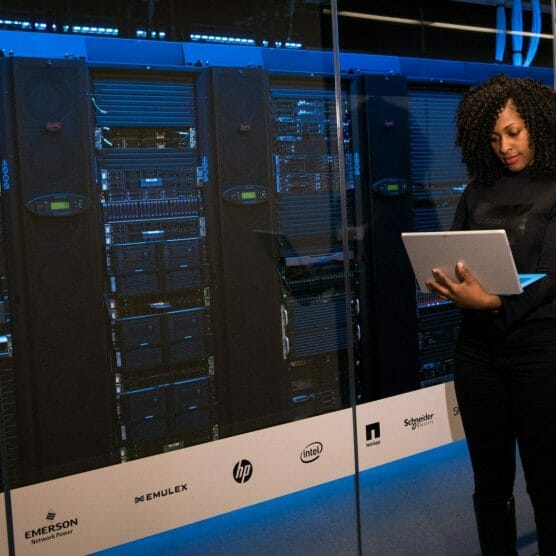IoT Device Developers: Choose the Platform That Meets the Application

An estimated 20+ billion IoT devices will be connected by 2023. These Internet of Things (IoT) devices will constantly sense, measure and report. From the contents of the refrigerator to outside air temperature through traffic pattern monitoring, airport security and autonomous vehicles, these devices will always be communicating with the network.
IoT devices will have a range of response requirements. Some require real-time response, while others update their status less often. While an air temperature sensor only needs to update every couple minutes, a traffic camera is likely to stream high-quality video 24×7.
Just like IoT devices have a range of requirements, so too does a 5G network support a variety of connection types (one of the differentiators from 4G or LTE). There isn’t a single characteristic for 5G networks, but rather a range of options. IoT device developers need to choose the performance that meets the application: High-bandwidth and low latency for mission-critical performance, lower bandwidth for video streaming or low bandwidth for slower IoT sensors
Cellular IoT
Cellular networks support massive flows across a high-reliability network. Whereas in the past, cellular-enabled IoT devices tended to be power-hungry, and users were required to pay for full LTE support even when data rates were low. On the massive IoT end of the spectrum, cellular-enabled sensors can transfer reasonable amounts of data across considerable distances without draining the battery at a low cost. On the other extreme, ultra-low latency (sub-2ms) and exceptionally high bandwidth (beyond 10Gbps) open new applications like remote surgery.
Unlike other technologies, IoT devices don’t have to register with a local router or with a gateway interface. This is important when devices move beyond the range of a single gateway. Consider a scenario where a construction company is asset-tracking a generator or other portable device. On the other hand, in a BlueTooth or WiFi scenario, the asset is only tracked when its within range of the gateway or hub. With cellular IoT, the device is tracked anywhere in the network. This means it’s less likely to go missing.
The second key element to Cellular IoT is that the network guarantees end-to-end performance. For technologies like WiFi, it may be possible to have a reliable performance to the WiFi hub and then from the hub into the network, but that’s the limit. With Cellular IoT, the network is configured end-to-end to support each IoT device.
Massive IoT
Devices connected to the low-frequency spectrum typically have lower data rates – such as barometric pressure measurements or black ice detection. Cat-M1 and NB-IoT operate at low frequencies allowing the signal to travel greater distances and pass through objects that reflect higher frequencies. This allows deeper signal penetration into buildings, etc. Devices on CatM1 can operate up to 1Mbps, whereas NB-IoT typically provides about 200kbps transmission. IoT devices in this category are expected to extend battery life up to 10-years. Further, these narrow bandwidths allow the device to extend on a massive scale.
Broadband IoT
Broadband IoT devices are more comparable to the existing LTE network. In this category are devices like the mobile phone, the smartwatch or even the drone. Mobile users will benefit from better video streaming, so too will IoT devices benefit from higher bandwidth and lower latency. This means that VR and AR applications will be significantly more responsive.
Critical IoT
Critical IoT is a significant improvement for 5G enabled IoT devices compared to earlier generations. With latency in the range of 1ms, responsivity will be noticeable. Autonomous and connected vehicles need this kind of response time to operate at reasonable speeds. So too, do precise manufacturing equipment. Ultimately, Ultra-Reliable, Low Latency (uRLL) features in 5G are going to impact healthcare and enable smart cities.
Ultra-low latency and extreme bandwidth (above 10Gbps) will have a cost, but it’s important to realize that only certain IoT devices need to bear that cost. For other devices, like very low data rate sensors, 5G network access will be less expensive than today’s cellular-based IoT systems.
Note: This post expands on the first diagram found in Ericsson‘s article, Cellular IoT Evolution for Industry Digitalization.
Want to read more about IOT?
Join our mailing list for email updates on updates, community news, new services, promotions, and more.
About the author
 Tim Warland is an innovative and conscientious risk-taker with 20+ years in high-tech management and engineering. He has developed, marketed and sold products in high-risk, high-reward B2B markets. He has also contributed to the development of international standards, defined product/market requirements, engaged lead-customers, managed product development and supported customer education and bring-up for two generations of Ethernet products supporting 10G and 100G leading to high return on investment. He is Canada’s #1 leader in Ethernet physical layer products.
Tim Warland is an innovative and conscientious risk-taker with 20+ years in high-tech management and engineering. He has developed, marketed and sold products in high-risk, high-reward B2B markets. He has also contributed to the development of international standards, defined product/market requirements, engaged lead-customers, managed product development and supported customer education and bring-up for two generations of Ethernet products supporting 10G and 100G leading to high return on investment. He is Canada’s #1 leader in Ethernet physical layer products.
Tim has been providing consulting services since 2003. He specializes in supporting complex technology products through market research, marketing collateral (white papers, blogs, application notes, press releases, etc.), and sales training. He helps client organizations articulate value proposition and product differentiation. Currently, Tim works with Invest Ottawa as Manager, Venture Programs, on the Next Generation Network Program and the ENCQOR 5G testbed.
Are you interested in learning more about what goes on at Bayview Yards? See why our facility is Ottawa’s epicentre for innovation, business acceleration and job creation: explore the website.



